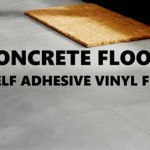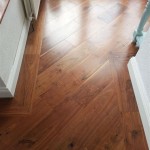Making a Seamless Transition with Laminate Flooring
Laminate flooring offers an array of benefits, including durability, affordability, and easy maintenance. Creating a seamless transition between laminate flooring and other flooring materials is crucial for maintaining a cohesive and aesthetically pleasing look in your home.Preparing the Subfloor
*Level the subfloor:
Ensure the subfloor is level within 1/8 inch over a 10-foot span. Use a self-leveling compound or featheredge plywood to level any uneven areas. *Install an underlayment:
An underlayment, such as cork or felt, provides a moisture barrier and soundproofing and helps smooth out any imperfections in the subfloor.Installing the Laminate
*Plan your layout:
Start in a corner of the room and determine the best orientation for the planks. Allow for expansion gaps around the perimeter of the room. *Lay down the first row:
Use spacer blocks to ensure the gap between the planks and the walls. Use a tapping block and a hammer to secure the planks together. *Continue installing rows:
Stagger the end joints of the planks by at least 6 inches. Check the level regularly, especially when transitioning to different flooring materials.Transition to Different Flooring Materials
*Threshold strips:
Use transition strips to create a smooth transition between laminate flooring and other flooring materials, such as tile, hardwood, or carpet. These strips come in various materials and styles to match your décor. *Reducer strips:
If the laminate flooring is higher than the adjacent flooring, use reducer strips to bridge the height difference. These strips are designed to provide a gradual transition. *T-moldings:
T-moldings are used when two flooring materials meet at a perpendicular angle, such as at doorways or hallways. They conceal the expansion gap and provide a decorative touch.Finishing Touches
*Caulk the edges:
Apply caulk around the perimeter of the flooring to seal any gaps and prevent moisture from entering. Use a caulk that matches the color of the flooring or the transition strips. *Install baseboards or quarter-rounds:
Baseboards cover the expansion gap at the bottom of the walls and add a finished look to the room. Quarter-rounds can be used instead of baseboards to provide a more subtle transition.Tips for a Successful Installation
*Use a moisture barrier:
Install a moisture barrier between the subfloor and the laminate flooring to prevent water damage. *Allow for expansion gaps:
Expansion gaps are crucial to prevent buckling or warping of the laminate flooring due to temperature or humidity changes. *Check the manufacturer's instructions:
Carefully follow the manufacturer's instructions for installation and maintenance to ensure a long-lasting and durable floor. *Hire a professional:
If you are not comfortable installing laminate flooring yourself, consider hiring a professional installer to ensure a seamless and professional finish. By following these steps and embracing these tips, you can seamlessly transition laminate flooring with other flooring materials, creating a cohesive and visually appealing space in your home.
How To Transition Between Two Diffe Floors Flooring

How To Create Seamless Floor Transitions Doityourself Com

Your Guide To Stunning Floor Transitions Next Day Floors

How To Transition Flooring Best Floor Transitions 50

Wood Flooring Transitions Prestige Floors

Laminate Flooring Transition Strips Commercial Tarkett

Flooring Transitions Ideas To Help Make Your Home Flow

How To Transition Between Two Diffe Wood Floors

We Can Meet Hardwood With Tile To Make A Seamless Transition Bamboo Flooring Kitchen

Guide To Flooring Transitions
See Also







